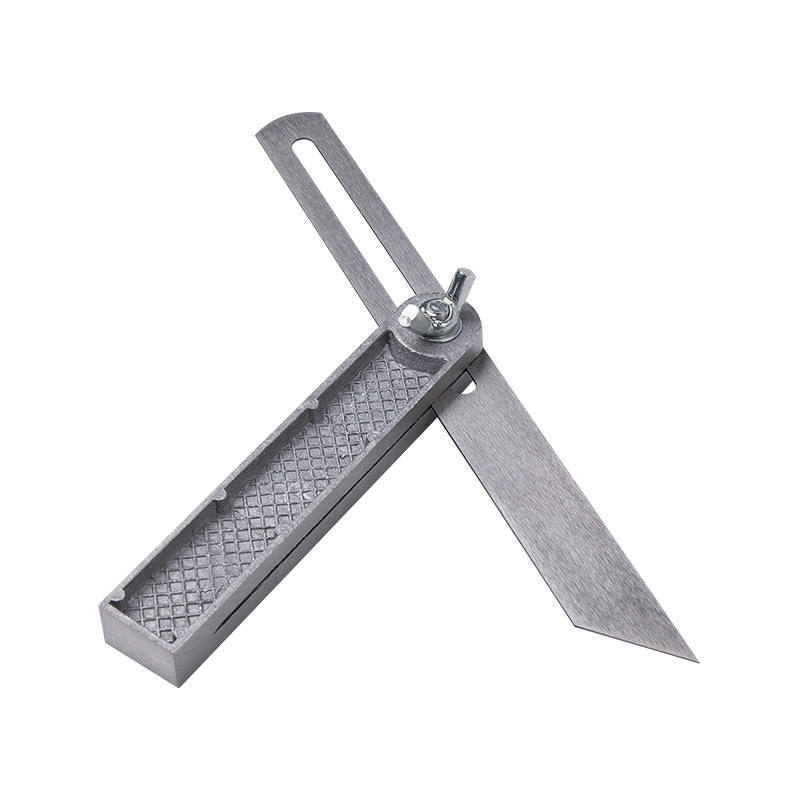The length of the blade on a sliding T-bevel significantly impacts its functionality in several ways:
Versatility: Longer blades, typically ranging from 8 to 12 inches or more, enhance the sliding T-bevel's versatility across different tasks and materials. In woodworking, for example, they excel in marking angles on larger boards and beams used in framing, cabinetry, or furniture making. For metalworkers, longer blades are essential when aligning structural components or fabricating large-scale metalwork, ensuring precise angle measurements across expansive surfaces.
Reach: The extended blade length enables the sliding T-bevel to reach deep into materials, such as thick timber or metal plates, crucial for accurately marking angles over significant distances. This capability is invaluable in construction and carpentry, where precise angle alignment ensures the integrity and stability of joints, cuts, and installations. Metal fabricators rely on this extended reach to maintain accuracy when setting up welding projects or aligning components in complex assemblies.
Stability: Longer blades provide increased surface contact with the workpiece, enhancing stability during angle measurement and marking. This stability minimizes the risk of errors caused by blade slippage or movement, crucial in tasks where precise angles are critical for fit and functionality. For example, in woodworking joinery, the stability of a longer blade ensures that mitered cuts and dovetail joints align perfectly, contributing to the structural strength and aesthetic appeal of finished pieces.
Precision: While longer blades offer stability and reach, they may be less maneuverable in tight or intricate spaces compared to shorter blades, typically around 6 inches or less. Shorter blades are preferred for fine woodworking tasks that demand high precision, such as crafting detailed joinery or fitting components in delicate assemblies. Their compact size allows craftsmen to navigate around curves, corners, and small-scale projects with greater ease and accuracy.
Portability: Shorter blades are generally more compact and lightweight, making them easier to carry and maneuver, particularly in confined or overhead workspaces. This portability is advantageous for professionals who frequently move between job sites or need to work in diverse environments where space and mobility are limited. Compact sliding T-bevels are also favored by tradespeople who prioritize efficiency and ease of use during onsite installations or repairs.
Weight: Longer blades contribute additional weight to the sliding T-bevel, which can provide stability during use but may lead to increased fatigue over extended periods, especially in overhead or repetitive tasks. Balancing weight with blade length is crucial to ensure ergonomic comfort and reduce strain on the user's hands and arms during prolonged use. We design sliding T-bevels with ergonomic handles and balanced blade lengths to optimize comfort and usability for professionals across various applications.
Storage: Longer blades necessitate adequate storage space in toolboxes or workshops, requiring consideration of organizational needs and storage solutions. Proper storage helps protect the blade from damage and ensures it remains in optimal condition for accurate angle measurement over time. Organized storage also facilitates quick access to sliding T-bevels of varying blade lengths, enabling professionals to efficiently select the right tool for specific tasks and projects.
Cast aluminium handle sliding T-bevel




 English
English Español
Español
















